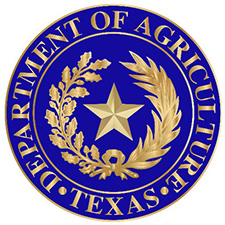(AG Insider) The two largest U.S. farm groups stuck to requests for expensive changes in the farm safety net — higher crop subsidy rates and broader access to subsidized insurance — in the face of a warning on Tuesday that the money might not be available. Senate Agriculture Committee chair Debbie Stabenow pointed to proposals that would tie an increase in the federal debt limit to steep cuts in spending.
“I know that all of you are calling for additional resources. We want to do the best we can,” said Stabenow, a Michigan Democrat. “But if we do not have additional funding in the baseline, we’re going to need to focus on our top priorities and need your best thinking on how we do this together, to be able to target this.”
Zippy Duvall, president of the American Farm Bureau Federation, and Rob Larew, president of the National Farmers Union, said the top issues for farmers were strengthening the crop insurance program and boosting reference prices, a key factor in calculating subsidy payments, in the commodity support program.
When measured against the impact of the trade war, inflation, rising production costs, and disruptions in global markets, “it isn’t a true safety net,” said Duvall, referring to commodity supports. Larew said crop insurance should be available to more producers, particularly specialty crop growers, and with easier-to-follow regulations that would attract diversified farms. “Certainly crop insurance is something that is always mentioned front and center [by farmers] to make sure it remains strong,” said Larew.
SNAP, by far the biggest part of the farm bill, is expected to account for $4 of every $5 in the 2023 farm bill. Crop insurance would be the largest of the agricultural supports, at $9.7 billion a year, followed by $6.2 billion for commodity subsidies and $5.8 billion for land stewardship.
Net farm income, a USDA gauge of profitability, is forecast to decline this year, after two years of the highest income ever, due to lower commodity prices, high farm expenses, and reduced federal spending.
“At a time when net farm income is well above historic norms, Congress should not be increasing farm subsidies,” said 11 environmental, consumer, small farm, and small government groups in a letter opposing higher reference prices. “Increasing price guarantees for covered commodities would only boost federal payments to the largest and most successful farmers, who already received almost 66 percent of all commodity subsidies in 2021 and almost 60 percent of all crop insurance subsidies between 2012 and 2020.”
The letter was sent to the leaders of the Senate and House Agriculture committees.
The AFBF and the NFU were among the groups that support higher funding for the farm bill. The House Agriculture Committee has requested increased funding. Stabenow and Arkansas Sen. John Boozman, the senior Republican on the Senate Agriculture Committee, sent a similar request to the Senate Budget Committee.
Budget sequestration, with limits on federal spending, was the result in 2011 when an increase in the debt limit was tied to annual government outlays, Stabenow said during an Agriculture subcommittee hearing on the farm bill. “Ultimately that ended up in across-the-board spending cuts to a variety of mandatory spending programs,” including at the USDA, she said. The restraint on spending “continues today and will continue for another eight years.”
Agriculture Committee member Sen. Chuck Grassley of Iowa, who also is the senior Republican on the Budget Committee, asked Duvall how to expand the farm safety net without additional money. “That’s a tough question. How do you do it and not spend more money,” replied Duvall.











